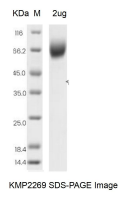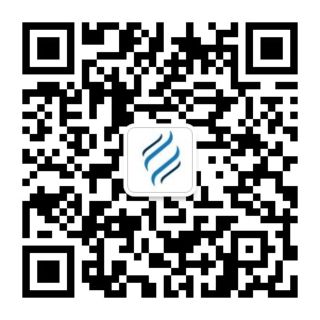Mouse ILT3 Protein, Fc Tag
-
产品编号
KMP2269
-
别名
白细胞免疫球蛋白样受体 B 亚家族成员 4, Leukocyte immunoglobulin-like receptor subfamily B member 4, ILT3
-
规格
- 50ug
- 100ug
- 200ug
| Alias | 白细胞免疫球蛋白样受体 B 亚家族成员 4, Leukocyte immunoglobulin-like receptor subfamily B member 4, ILT3 |
| Catalog Number | KMP2269 |
| Product Description | The Mouse ILT3 Protein(KMP2269) is produced in HEK293 Cells and the target gene encoding Gly24-Lys238 is expressed with a Fc tag at the C-terminus. |
| Molecular Name | ILT3 |
| Species | Mouse |
| Host | HEK293 Cells |
| Size | 50ug, 100ug, 200ug |
| Purity | >95% as determined by SDS-PAGE |
| Purification | Affinity purification |
| Endotoxin | <1.0 EU/ug determined by the LAL method |
| Formulation | 50mM Tris-HCl, 100mM Glycine, pH7.5 |
| Background | Mouse Leukocyte Immunoglobulin-like Receptor Subfamily B Member 4(LILRB4/CD85k/ILT3) is an approximately transmembrane glycoprotein that negatively regulates immune cell activation. Mouse LILRB4 consists of a 215 amino acid(aa) extracellular domain with two Ig-like domains, a 22 aa transmembrane segment, and a 75 aa cytoplasmic domain with 3 immunoreceptor tyrosine-based inhibitory motifs(ITIM). Within the ECD, mouse LILRB4 shares 45% and 77% aa sequence identity with human and rat LILRB4, respectively. Alternative splicing of mouse LILRB4 generates a potentially soluble isoform that lacks the transmembrane segment. LILRB4 is expressed on dendritic cells(DC), monocytes, macrophages, and vascular endothelial cells(EC). Ligation of LILRB4 triggers ITIM-mediated inhibition of cellactivating signaling, leading to enhanced immune tolerance and reduced allogeneic graft rejection. Soluble LILRB4 induces the differentiation of CD8+ T suppressor cells(Ts) that can inhibit the effector functions of CD4+ Th cells and CD8+ CTL. In turn, CD8+ Ts cells induce LILRB4 up-regulation and a tolerogenic phenotype in monocytes, DC, and EC. |
| SDS-PAGE |  |
| Predicted Molecular Weight | 23.65 kDa |
| Storage Condition | Aliquot and store at -20℃ to -80℃. Avoid repeated freezing and thawing cycles. |
| Shipping Condition | In general, the proteins are provided as lyophilized powder which are shipped at ambient temperature. They are shipped out in dry ice if supplied in liquid form. |
| Uniprot ID | Q64281 |
| References | 1.J. Biol. Chem. 274:5791-5796 (1999) 2.Nat. Immunol. 2:436-442 (2001) 3.J. Exp. Med. 194:227-234 (2001) 4.J. Immunol. 170:4095-4101 (2003) 5.Eur. J. Immunol. 33:2262-2268 (2003) 6.J. Immunol. 193:635-644 (2014) 7.Int. Immunol. 33:447-458 (2021) 8.J. Immunol. 158:9-12 (1997) |
| Function | Inhibitory receptor involved in the down-regulation of the immune response (PubMed:10026201, PubMed:24935931). Receptor for FN1 (PubMed:34089617). Receptor for integrin ITGAV/ITGB3 (PubMed:11323698). Inhibits IgE-mediated mast cell activation, at least in part through interaction with ITGAV/ITGB3 (PubMed:8855262, PubMed:10026201, PubMed:11457897, PubMed:11323698). Also inhibits KITLG/SCF-mediated mast cell activation (PubMed:12884301). Through interaction with ITGAV/ITGB3, inhibits antibody production by memory and marginal zone B cells, probably by suppressing their differentiation into plasma cells (PubMed:24935931). Inhibits IFNG production by CD8 T cells, CD4 T cells and natural killer cells (PubMed:12682239). Inhibits antigen presentation by dendritic cells to T cells, preventing T cell activation (PubMed:18792399). Inhibits lipopolysaccharide-mediated neutrophil-dependent vascular injury (PubMed:14557414). Suppresses the allergic inflammatory response by inhibiting infiltration of neutrophils and eosinophils and preventing mast cell degranulation (PubMed:17761953). Inhibits lysis by natural killer cells (PubMed:8977169). |





 0
0
